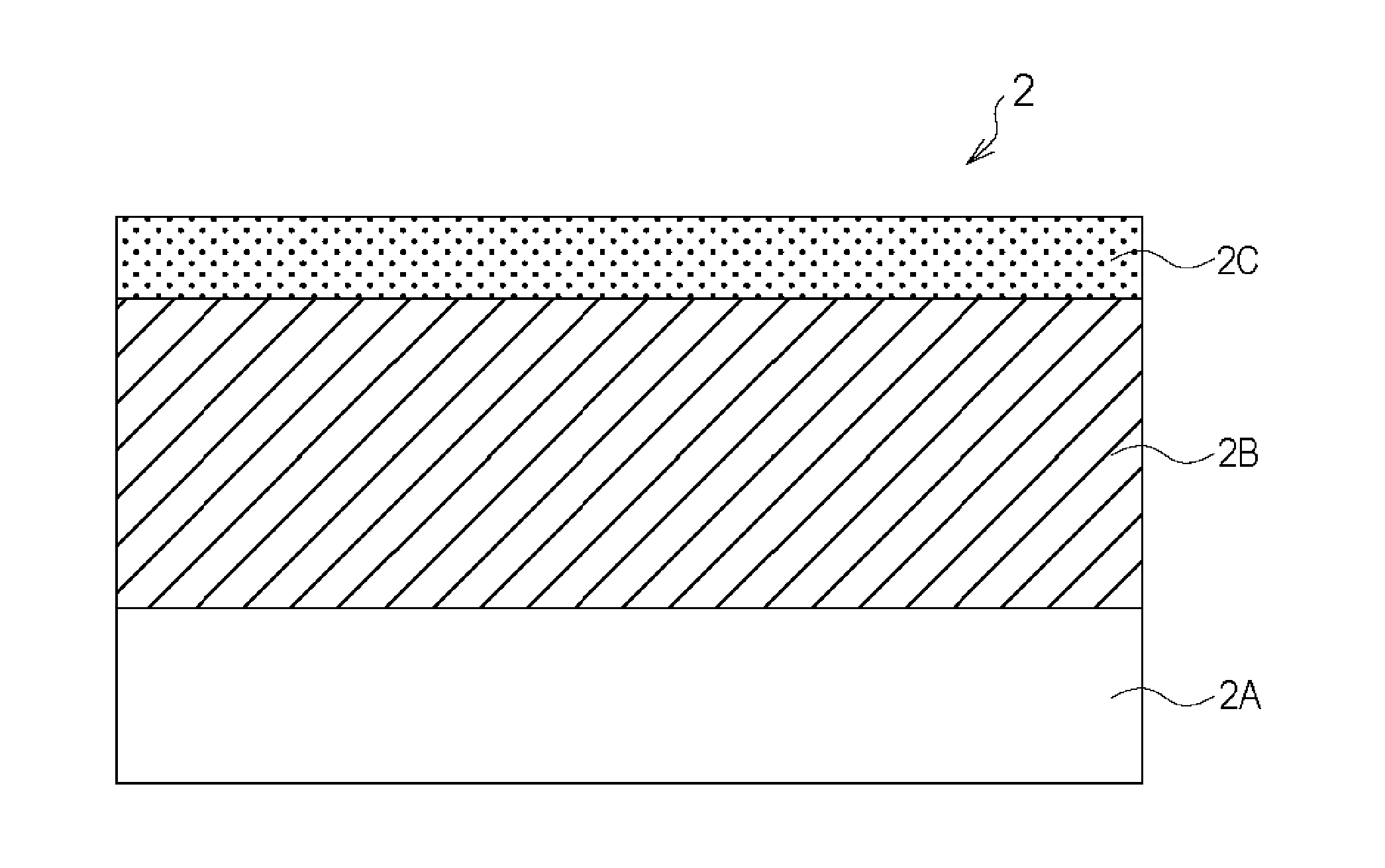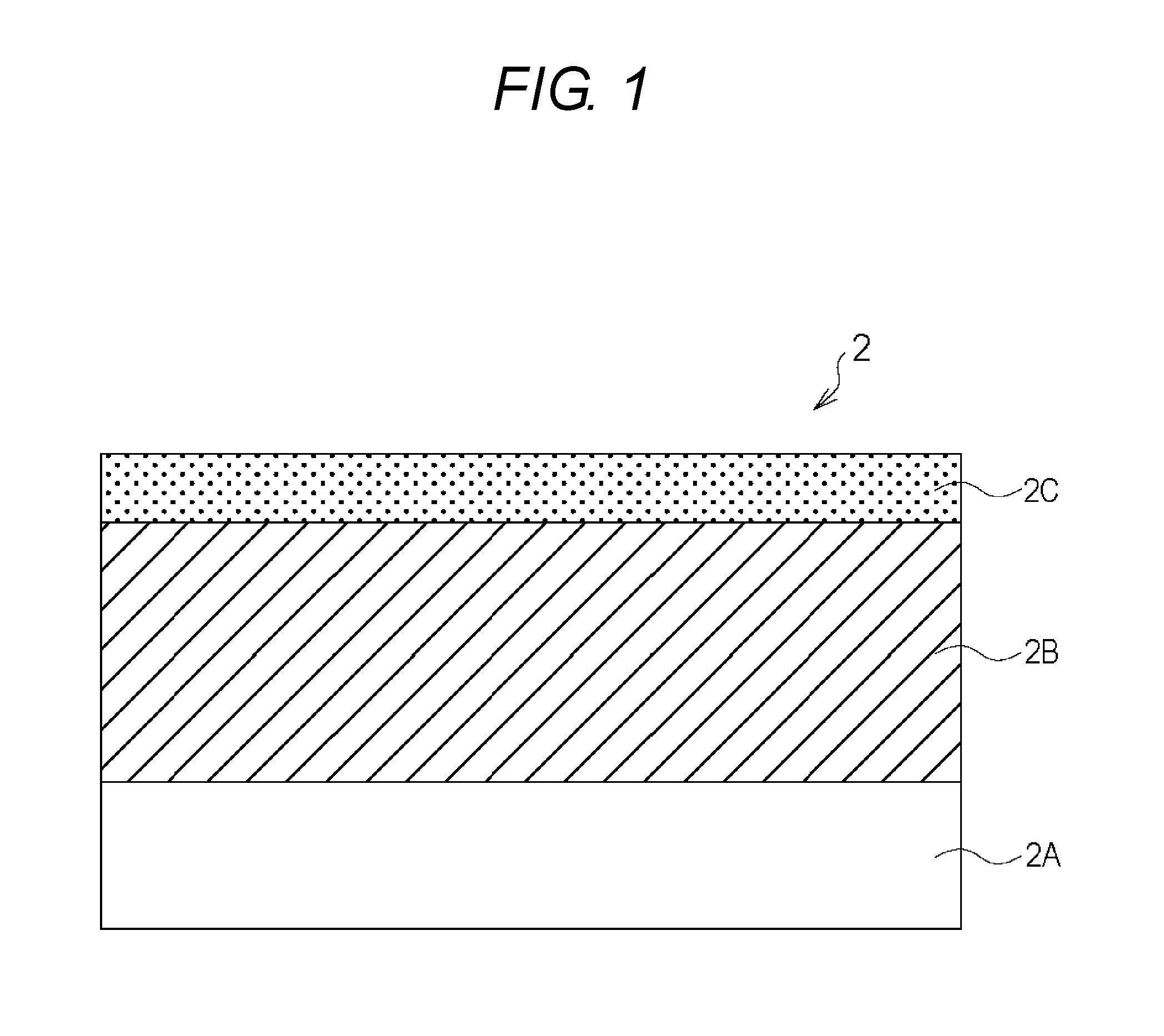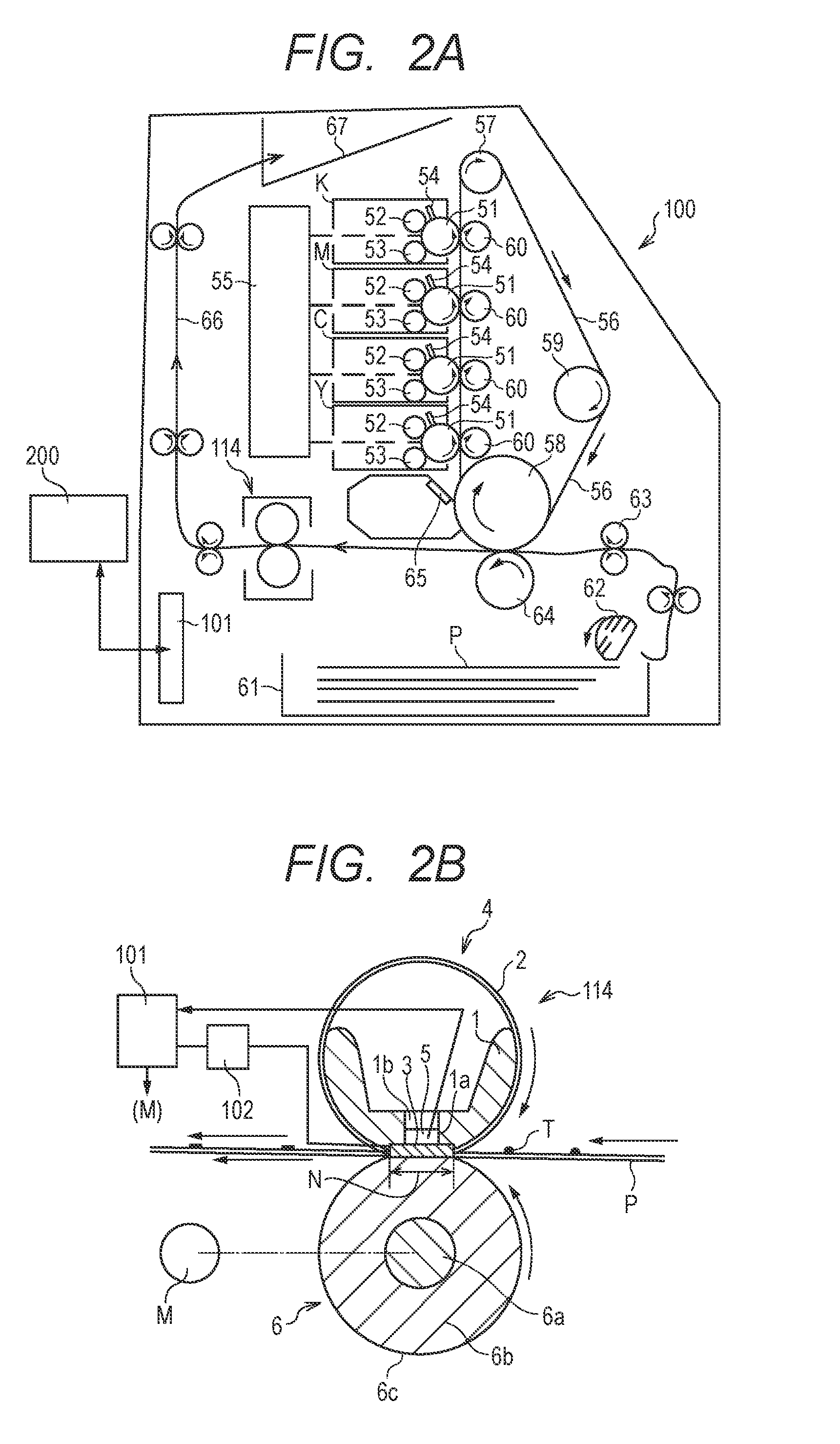Member for electrophotography, image heating apparatus, image forming apparatus, and method for manufacturing member for electrophotography
a manufacturing method and electrophotography technology, applied in the field of electrophotography members, can solve the problems of degrading the fixing performance reducing the thickness of the release layer, and degrading so as to improve the thermal conductive properties of the fixing member, improve the printing speed, and save the energy of the image forming apparatus.
- Summary
- Abstract
- Description
- Claims
- Application Information
AI Technical Summary
Benefits of technology
Problems solved by technology
Method used
Image
Examples
example 1-1
[0134](10-1) Step of Forming Elastic Layer 2B of Fixing Film
[0135]A metal belt of SUS of 240 mm in length, 40 μm in thickness, and 30 mm in outside diameter (flexible endless belt member) was used as the substrate 2A. For a region of 230 mm in length excluding both ends of 5 mm on the outer peripheral surface, a rubber-based primer (Trade Name: X-33-174A / B, from Shin-Etsu Silicone Co., Ltd.) was used and applied onto the substrate 2A to apply a primer layer in a thin and uniform fashion. Then, this was put in an electrical oven, and dried for 30 minutes at 200° C. In addition, for a material of the elastic layer 2B, a well-known addition-curable liquid silicone rubber having a methyl group in a side chain (Trade Name: “KE-1281-A / B”, from Shin-Etsu Silicone Co., Ltd.) was used, in which metal silicon filler of approximately 6.0 μm in average particle size in a fracture geometry (Trade Name: M-Si #600, from KINSEI MATEC CO., LTD.) was mixed as a thermal conductive filler. Specifically...
examples 1-2 , 1-3
Examples 1-2, 1-3
[0151]In the same way as in Example 1-1 except that the integrated amount of light from the ultraviolet light was adjusted to the values listed in Table 1, the fixing films 2 according to Examples 1-2 and 1-3 were each prepared, and subjected to the evaluation. The evaluation result is shown in Table 1. Also in the present examples, in regard to adhesion, the failure mode was a cohesive failure in the elastic layer 2B.
example 2-1
[0152]In the same way as in Example 1 except that a low pressure mercury UV lamp with a center wavelength of 254 nm (Trade Name: GLQ500US / 11, from TOSHIBA LIGHTING & TECHNOLOGY CORPORATION (used to be HARISON TOSHIBA LIGHTING Corporation)) was used in place of the excimer UV lamp (Trade Name: MEUT-1-500, from M. D. Excimer Inc.) as a light source in the step of bonding the elastic layer 2B and the release layer 2C, the fixing film 2 was prepared, and subjected to the evaluation. The evaluation result is shown in Table 1. Also in the present example, in the adhesion evaluation, the failure mode was a cohesive failure in the elastic layer 2B.
PUM
| Property | Measurement | Unit |
|---|---|---|
| Thickness | aaaaa | aaaaa |
| Thickness | aaaaa | aaaaa |
| Thickness | aaaaa | aaaaa |
Abstract
Description
Claims
Application Information
 Login to View More
Login to View More - R&D
- Intellectual Property
- Life Sciences
- Materials
- Tech Scout
- Unparalleled Data Quality
- Higher Quality Content
- 60% Fewer Hallucinations
Browse by: Latest US Patents, China's latest patents, Technical Efficacy Thesaurus, Application Domain, Technology Topic, Popular Technical Reports.
© 2025 PatSnap. All rights reserved.Legal|Privacy policy|Modern Slavery Act Transparency Statement|Sitemap|About US| Contact US: help@patsnap.com



